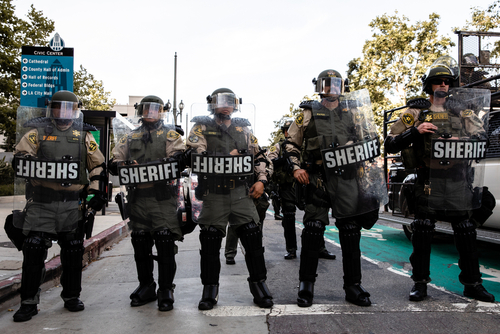
In recent times, a disturbing trend has emerged within the realm of law enforcement and the judicial system. There appears to be a quiet but significant shift in the traditional concept of self-defense, with a tilt that seems to favor criminal elements over law-abiding citizens. This change is not only alarming but also poses a threat to the foundational principles of justice and personal safety.
John Farnam, a respected firearms and defensive tactics instructor, has voiced his concerns regarding this issue. He points out that any use of force by citizens, especially deadly force in self-defense situations, is increasingly viewed with suspicion and often treated as a criminal act. This perspective is particularly prevalent in cities governed by leftist and globalist politicians, where residents are implicitly expected to “accept” violent crime as part of their daily lives.
New Marquette Law School poll finds that 67% of US adults support "an individual's right to carry a handgun for self-defense outside the home," up from 64% in September: https://t.co/eK8UB64dhp pic.twitter.com/xHY03Hqc9q
— Firearms Policy Coalition (@gunpolicy) November 15, 2023
The implications of such an attitude are profound. Politicians who advocate for these policies are often protected by armed security, paid for by taxpayers, insulating them from the very violence they expect their constituents to endure. This double standard creates a divide between the protected elite and ordinary citizens, who are left vulnerable and discouraged from defending themselves.
A recent incident in a major U.S. city serves as a case study for this concerning shift. A subway rider in New York City witnessed a violent mugging and took action by firing warning shots to deter the attacker. While the mugger fled and no one was harmed, the Good Samaritan was arrested and charged criminally, whereas the mugger, with a history of similar offenses, was quickly released back onto the streets.
🚨BREAKING🚨
The House of Representatives is about to vote on an amendment by @RepMMM to DEFUND ongoing biased anti-gun "studies" & "research" by CDC.
This is CRITICAL since Biden's CDC has been censoring pro-gun & self-defense statistics.👏 pic.twitter.com/devNTMGU01
— Gun Owners of America (@GunOwners) November 15, 2023
This scenario highlights the subtle blame-shifting that is becoming more common in law enforcement rhetoric. The individual who intervened to help a victim is cast as the “bad guy,” while the actual perpetrator seems to receive a less severe response from the justice system. Such incidents send a chilling message to those who might consider stepping up to help others in distress.
Farnam offers several lessons from this incident. He advises against the use of warning shots and emphasizes the importance of not fleeing the scene unless necessary for one’s safety. His guidance reflects the new reality that even well-intentioned actions can be misconstrued or lead to legal repercussions in the current climate.
The advice extends beyond just reacting to crimes in progress. Citizens are encouraged to practice situational awareness and prepare for emergencies, including equipping their vehicles with survival essentials. For those living in states where it is legal, keeping a means of self-defense in the car is also recommended.
Moreover, Farnam goes as far as advising people to avoid cities like New York City, Washington, D.C., Minneapolis, Austin, Texas; Portland, Oregon; Seattle, Chicago, San Francisco, and others that are likely to be run by globalists with values that clash with traditional American principles. He suggests that the same dynamics of undervaluing self-defense rights are present in many cities, regardless of size.
As we navigate these changing landscapes, it is crucial for individuals to remain vigilant and informed about their rights and the local laws that govern self-defense. The erosion of the right to protect oneself and others is a slippery slope that can lead to increased vulnerability and a sense of powerlessness among citizens.
In conclusion, the shift in how self-defense is perceived by law enforcement and the judiciary is a troubling development that warrants attention and action. It is imperative for communities to engage in dialogue and advocate for policies that uphold the right to personal safety and justice for all, not just a select few.












